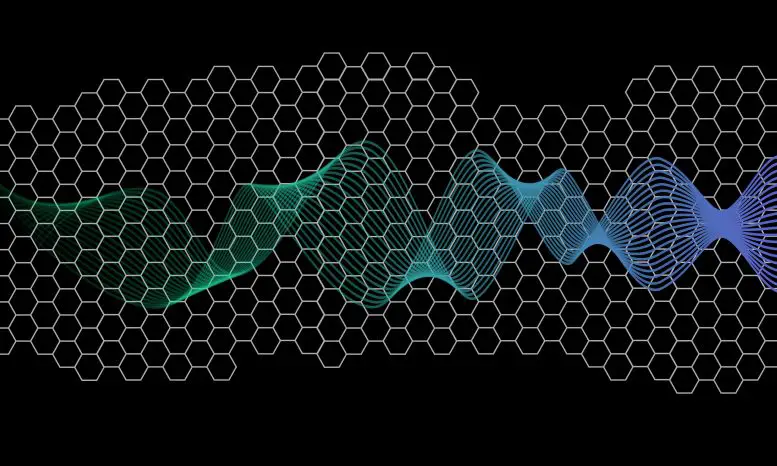A new computer model shows that graphene’s extraordinary electronic properties remain stable despite flaws, confirming its potential in quantum technology and sensing applications.
Realism in materials research: the example of graphene
Nothing in the world is perfect. This also applies to materials research. In computer simulations, the system is often represented in a highly idealized way; for example, they calculate the properties that an absolutely perfect crystal would have. But in practice we are always dealing with additive effects, defects in the crystal lattice, additional particles attached to the material, complex interactions between particles. So the real question is: Do these inevitable additional effects change the properties of the material or not?
This is particularly interesting in the case of the two-dimensional material graphene, which consists of only a single layer of carbon atoms. It has long been known that graphene has excellent electronic properties. However, it was still unclear how stable these features were. Did they perish, or did they remain intact, due to intricacies and additive effects that could not be avoided in practice? The Vienna University of Technology (TU Wien) has succeeded in developing a complex computer model of realistic graphene structures. The desired effects turned out to be very stable. Even imperfect pieces of graphene can be used for technological purposes. This is good news for the global graphene community.
Movement of electrons in graphene
“We calculate at the atomic scale how an electric current propagates in a small piece of graphene,” says Professor Florian Liebisch of the Institute for Theoretical Physics at the University of Vienna. “There are different ways an electron can move through a material. According to the rules of quantum physics, it doesn’t have to choose one of these paths; an electron can follow more than one path at the same time.”
Then these different paths can intersect in different ways. At very specific energy values the paths compensate each other; At this energy, the probability of electrons passing through a piece of graphene is very low, and the electric current is minimal. This is called “destructive interference”.
Florian Liebisch explains: “It is a highly desirable effect from a technological point of view that the current flow is dramatically reduced at very specific energy values for quantum-physical reasons.” “This can be used to process information on a small scale, similar to what electronic components in computer chips do, for example.”
It can also be used to develop new quantum sensors: Suppose a piece of graphene conducts almost no current. Then suddenly the molecule is attached to the graphene surface from the outside. Dr. “This single molecule slightly changes the electronic properties of a piece of graphene, and this may be enough to suddenly dramatically increase the current flow,” says Robert Stadler. “This can be used to make highly sensitive sensors.”
Challenges and advances in graphene modeling
But the physical effects that play into the details are very complex: “The size and shape of a piece of graphene is not always the same, and there are multibody interactions between multiple electrons that are very difficult to calculate mathematically. There may be unwanted extra atoms in some places and the atoms always wobble a bit; All of this needs to be taken into account in order to describe it in a truly realistic way,” says Dr. Angelo Valli.
Exactly this has now been achieved at the Vienna University of Technology: Angelo Valli, Robert Stadler, Thomas Fabian and Florian Liebisch have many years of experience in accurately describing the various effects of materials in computer models. By combining their expertise, they were able to develop a comprehensive computer model that includes all relevant sources of error and distortion effects available in graphics.
In this way, they were able to demonstrate that the desired effects are still visible even in the presence of these error sources. Due to quantum effects it is still possible to find a particular energy where the current flows only to a very small extent. Experiments have already shown that this is plausible, but no systematic theoretical work has yet been done.
This proves that graphene doesn’t have to be perfect to be used for quantum information technology or quantum sensing. This is an important message for applied research in this area: Worldwide efforts for the controllable use of quantum effects in graphene are indeed promising. Source
Source: Port Altele
